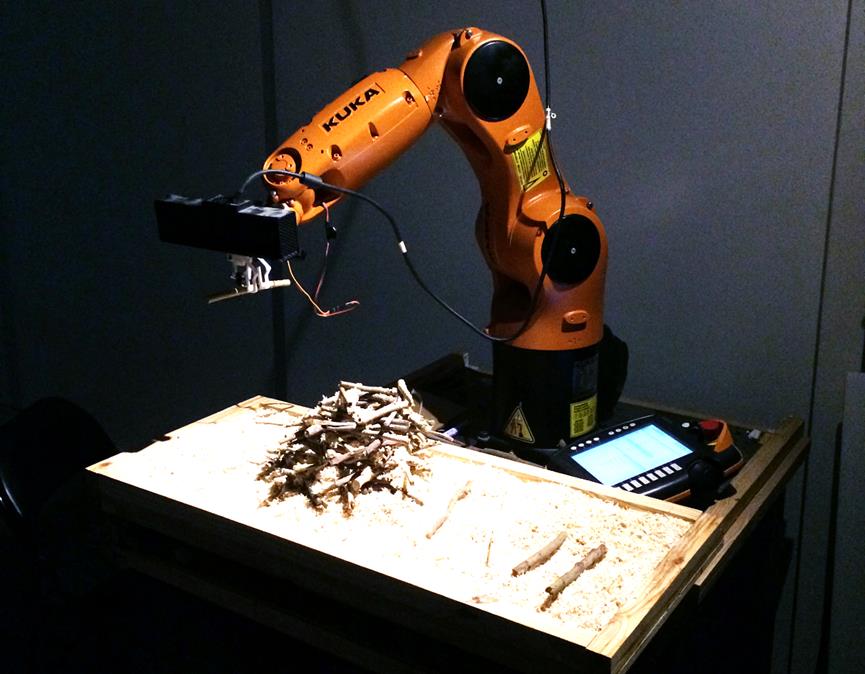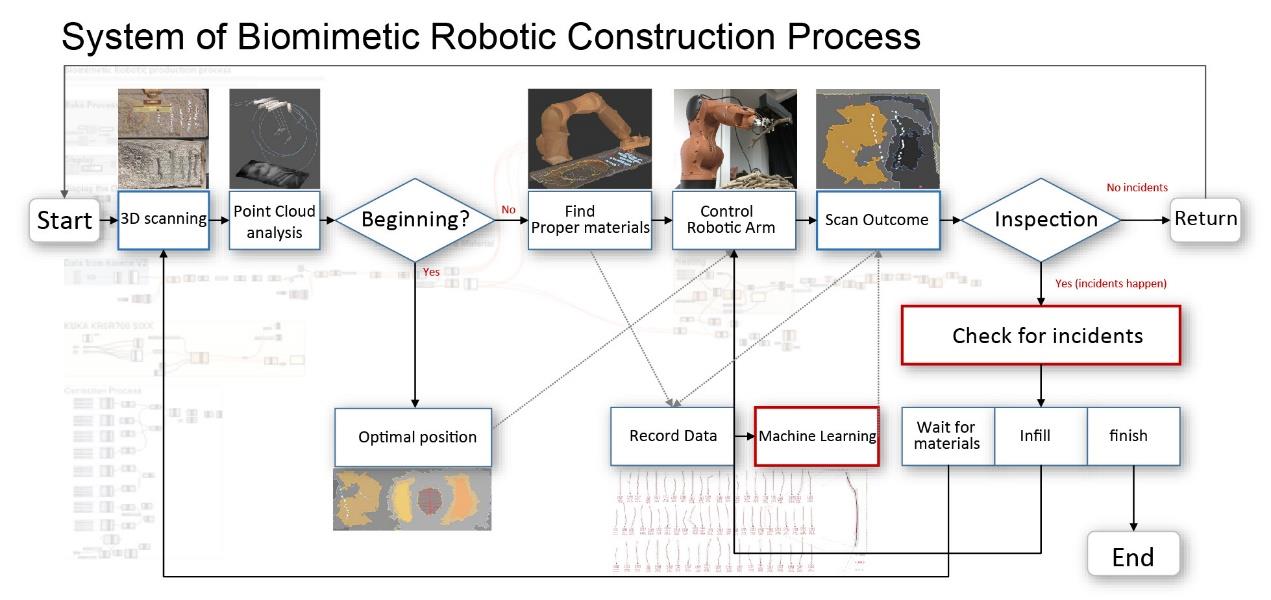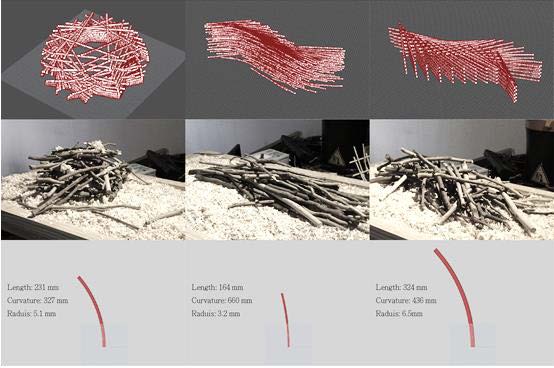研究生:鄭基立
指導教授:侯君昊
摘要
本論文中的仿生研究對象是被喻為生物建築師的河狸,河狸的水壩結構穩定且 尺寸巨大。河狸水壩由兩個流程完成構築機制,首先河狸從環境中選取適當的 材料,接著這些材料經由水流的外力促成結構間自組織。在台灣每年颱風或是 豪雨過後在河邊與出海口經常堆積大量漂流木,卻因為不規則的特性難以被利 用而被棄置甚至焚毀,對環境造成再次的破壞。若是有一套工法能幫助設計者 利用這些材料並且減少對材料的加工,這將能夠大幅改善建築對環境的衝擊以 及提供設計上更多的可能性。
在實作中,仿生機械手臂構築工法在技術層面採用六軸機械手臂與 3D 攝影 機,機讓構築機器人在複雜的環境中撿拾漂流木。並且經由機器學習的機制將 能讓構築機器人了解材料特性與構築的穩定性的關係,藉此構築機器人能透過 選取適當材料材來促進材料自組裝的機制,達成其就地取材與適應自然材料的 構築能力。
Student: Chi-Li Cheng, MS
Advisor: June-Hao Hou
Abstract
In this thesis, we investigate beavers as our objectives. Beavers are famous as natural architects. The structure of beaver dam is stable and the dimension is large. The mechanism of constructing beaver dam includes two processes. First, beavers select proper woods for construction and use streams to aggregate those woods to be self- assembled. This kind of natural materials is commonly seen in nature. Typhoons and rivers erode trees into mass driftwoods. These driftwoods are difficult to utilize by conventional construction process and are often discarded or burned. Therefore, if we can make good use of these natural materials instead of throwing them away, we can save lots of resources and provide design field with new possibilities.
In this Implementation, we use sticks as scaled-down driftwoods. Biomimetic robotic construction process utilizes six degree of freedom robot and 3D camera and improves construction through machine learning. The machine learning mechanism estimates the relation between material properties and structure stability. Thus, the construction robot can select proper sticks for self-assembly by adapting local natural materials.


